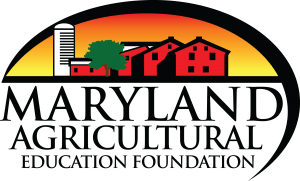
Image of a rockfish, also known as a striped bas
Rockfish and Food Web
How is matter transferred among species in the Chesapeake Bay food web?Grade 5
The Chesapeake Bay is home to over 350 different species of fish, including Maryland’s state fish, the rockfish (also known as the striped bass). In this lesson, we will learn more about the rockfish and explore the Chesapeake Bay food web to understand how marine life in the Bay transfers matter from one fish to another.
Teacher's Guide and Related Standards
I can describe the roles of species in the Chesapeake Bay and how fish and other marine species rely on one another for survival.
- How is matter transferred among organisms in the Chesapeake Bay food web?
- How can we use food webs to describe the roles of species in their environments?
Maryland Farm & Harvest Clip
- What method does the fisher use to catch rockfish, bass, and other fish?
- What resources did the fisher use in order to make the pound net?
- Besides rockfish, what other species in the Chesapeake Bay do we typically eat?
- Why is it important to have a variety of fish species in the Chesapeake Bay?
Vocabulary
Supplemental Enrichment Activities
Chesapeake Bay Food Web Model
Have students analyze the model of the Chesapeake Bay food web. Students should point out the roles of each species in the food web and their relationships to others. Further ask students what other types of organisms aren’t shown on this food web (decomposers) and what their role is in the Chesapeake Bay ecosystem.
in Ecosystems
Plants of the Chesapeake Bay
Explore and learn about various plants of the Chesapeake Bay. Pose the following questions to students:
- Why are plants necessary for the survival of fish and other marine life in the Bay?
- What is the role of plants in food webs?
Food Web Connections
Have students read the article to help them better understand the components of a food web and their importance. Guide students to understand how matter and energy flows and is transferred throughout the food web.
Career Connections


